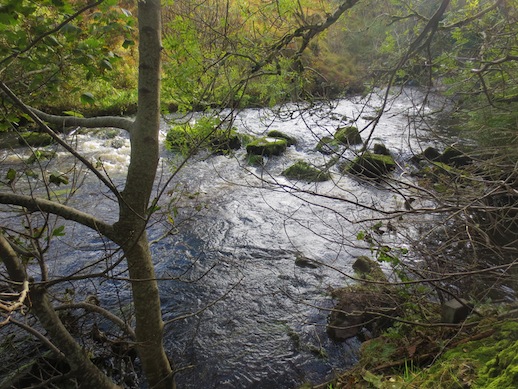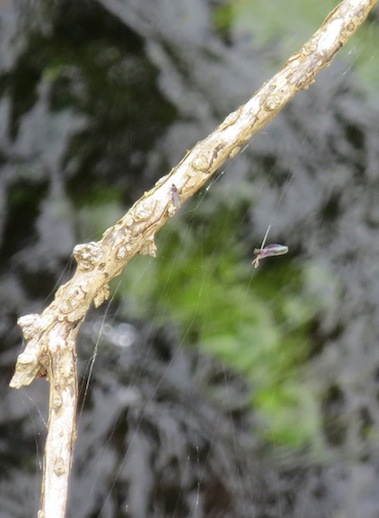
‘The River’ by Dr Sharon Blackie
Thanks very much to David and Sharon from the Riverwitch blog for letting us repost this piece.
Perhaps truth is not a place but a dance. That is what it seemed to be this morning when a piece of knowledge I first had as a young boy, and somehow misplaced for decades, circled around and re-materialised in a new river.
When I was small I lived in rivers. I did not distinguish very clearly between the worlds above and below the water’s surface because few of the creatures I lived amongst made that distinction. It is true that some creatures were always in the wet part of the world – gudgeon, eels, crayfish – no, now I think of it the eels also came onto and across dry land. And a few crossed the border only occasionally – trout leapt, kingfishers leapt the other way, occasionally crossing in the post. But many creatures were constantly back and forth – dippers, water shrews, otters, frogs – as if there weren’t any border controls at all. From these creatures I learnt to think of the river as porous.
Sat with my feet dangling in the water, amidst all my companions’ busy, daily routines of entering water and emerging into air, I learned that there was another, very different way in which a creature’s life could relate to the surface of the water, to the meniscus itself. A solemn way. A way that perplexed me – unable as I was to comprehend death, aged twelve. I watched thousands of ephemera hatch in the meniscus from their splitting nymph skins and bubble up beauty into the air. The ephemera, the class of insect to which the Mayfly belongs. The elegance of their wings, the lithe of their colourful bodies, the sheer daring excess of their long tails. All taking flight in a swirling dance above the river to find love, of which I maybe had some dim, precocious grasp, and leaving behind the homely river bed where they had lived such interesting, seemingly sufficient lives for a year or more. Leaving forever. No returns. And within 48 hours these dancers would all be dead.
Forty years on I am sat with my feet dangling in a different river watching the hatch of ephemera. For a couple of days there has been a steady pulse of emergence in the late morning. By my side are some dead branches of gorse projecting out over the river and carrying a spider’s web. One of yesterday’s emerging dancers is caught. After all the months of preparation and anticipation the tiny wings have stuck fast, hopelessly, just seconds after the water had released them. I bent down to speak a sadness over the tiny corpse. But then I noticed that things were not quite that simple, and smiled at what I saw.
It had happened like this. The tiny, beautiful ‘dun’ (or sub-imago as a scientist might say) had broken from both its nymph skin and the meniscus in a tumbling struggle of fast water a few yards upstream of the gorse branches. It flew immediately upwards and into the web feet-first. The spider was aware of its trembling but had eaten well over the previous day and was in no hurry. This dainty catch could wait until the following morning. Many other duns emerged and flew safely past the web, swirling upwards and away. Night fell. The cloud of recently flown duns found safe havens on the underside of alder leaves or in hawthorn bushes. Because the day of their emergence is not the day of the mating dance nor are the ‘dun’ or drab colours of the freshly winged sub-imagos the ones they will wear for their last flight.
This morning, before the spider was awake, in the best possible conditions of humidity and warmth, all the duns, including our dun in the spider’s web, laid their first set of wings flat. Wings which had only carried them for an hour or two at most, wings so intricate and costly, were cut off from circulation. One final time the skin of each individual split and from the husk of each dun emerged an imago, the ‘spinner’, the glorious glossy sun-catcher who would dance the last dance. I saw that the dun in the spider’s web had flown – and left the spider just the dry husk of the skin which had been its one-day identity. Whether it found the cloud of other spinners I can’t tell, but it had flown.
Also check out: Earthlines and Re-enchanting the earth
